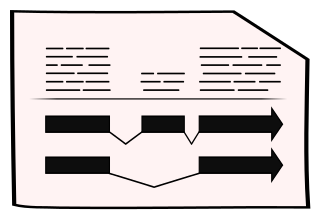Steinernema hermaphroditum
BioProject PRJNA982879 | Data Source Cornell University | Taxonomy ID 289476
About Steinernema hermaphroditum
Entomopathogenic nematodes (EPNs) of the genera Steinernema and Heterorhabditis parasitize and kill insect hosts, making them promising tools of natural insect control; at the same time, these EPNs also have species-specific mutualistic intestinal bacteria, making them instances of symbiosis as well as of parasitism. Most EPNs are genetically difficult to study, either because of awkward life cycles, or because they have heterozygous male-female genetics which cannot easily be made homozygous for efficient mutagenesis or transgenic modification. Steinernema hermaphroditum is a valuable exception because it has primarily self-fertilizing hermaphrodites with rare males, much like the model nematode Caenorhabditis elegans, and therefore can be subjected to efficient genetic modification.
Genome Assembly & Annotation
Assembly
Oxford Nanopore Technologies (ONT) reads, short Illumina reads, and Dovetail Omni-C reads (Illumina for Hi-C chromosomal scaffolding) sequencing data for the wild-type reference strain PS9179 (described by Cao et al. 2022) have been assembled into a chromosomally scaffolded genome (using raven v. 1.7.0 assembler) by Erich Schwarz and collaborators at Cornell University.
Annotation
Four runs of initial prediction of protein-coding genes were done with BRAKER2 in parallel, using four different modes: - ab initio, without softmasking - with input data from RNA-seq only, without softmasking - with input data from Clade IV proteomes, without softmasking - with input data from both RNA-seq and Clade IV proteomes, with softmasking.
The RNA-seq data came from two developmental stages, infectious juveniles (IJs) and mixed-sex adults; these stages were chosen to try getting data from as wide a range of genes as reasonably possible from two biological replicates. The Clade IV protein data came from previously published proteomes of these related nematodes, taken from the WBPS17 release of ParaSite: Bursaphelenchus okinawaensis, Panagrellus redivivus, Rhabditophanes sp. KR3021, Steinernema carpocapsae, Steinernema feltiae (two alternative proteomes), Steinernema glaseri, Steinernema monticolum, Steinernema scapterisci, and Strongyloides ratti. The results of multiple BRAKER2 runs were merged with TSEBRA while enforcing retention of all transcripts. Structurally redundant transcripts (transcripts belonging to a single merged gene, and encoding either exactly the same protein or subsets of exactly the same protein) were then reduced to a single transcript encoding the largest possible protein. The annotation was generated and provided by Erich Schwarz and collaborators at Cornell University.
Downloads
Tools
Key Publications
- Cao M, Schwartz HT, Tan CH, Sternberg PW. The entomopathogenic nematode Steinernema hermaphroditum is a self-fertilizing hermaphrodite and a genetically tractable system for the study of parasitic and mutualistic symbiosis. Genetics, 2022;220(1):iyab170
Navigation
Assembly Statistics
| Assembly | Sherm_1.0, GCA_030435675.1 |
| Strain | PS9179 |
| Database Version | WBPS19 |
| Genome Size | 90,773,528 |
| Data Source | Cornell University |
| Annotation Version | 2023-09-WormBase |
Gene counts
| Coding genes | 19,444 |
| Gene transcripts | 36,290 |
Learn more about this widget in our help section
This widget has been derived from the assembly-stats code developed by the Lepbase project at the University of Edinburgh











